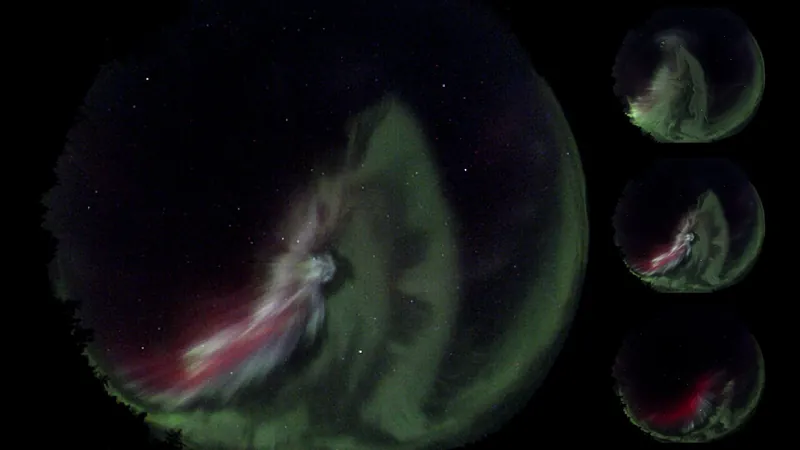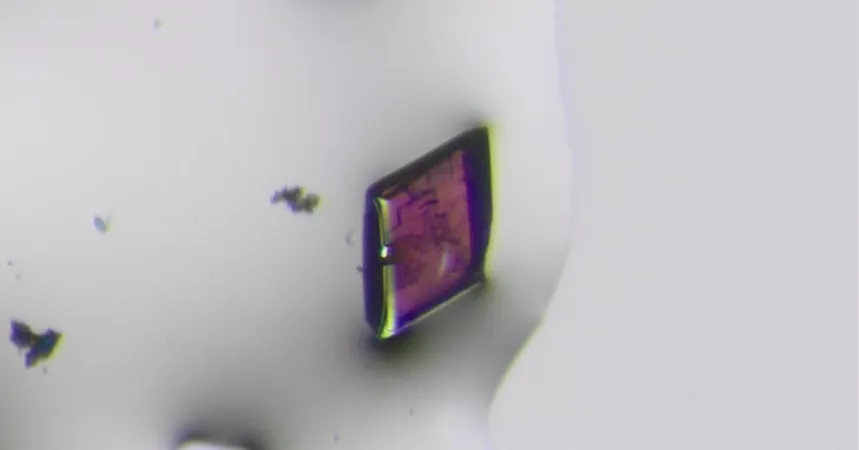
Unveiled Mysteries: Scientists Illuminate the Enigmatic White Patches Near Northern Lights!
2025-01-10
Author: William
Introduction
A previously unexplained whitish-gray patch appearing sporadically in the night sky alongside the mesmerizing northern lights has finally been deciphered by researchers at the University of Calgary. This groundbreaking revelation was issued in a paper published on December 30 in the prestigious journal Nature Communications.
The Phenomenon Explained
Dr. Emma Spanswick, the lead author and an associate professor in the Department of Physics and Astronomy, describes the phenomenon: “Imagine the vibrant green aurora dancing in the sky, complemented by hints of red. Suddenly, a structured patch emerges—gray and white—intertwined with the aurora. Naturally, our first impulse as scientists is to question, 'What is that?'”
Insights into the Discovery
While scientific papers have acknowledged the existence of this white patch before, a comprehensive explanation had never been provided until now. Spanswick's team concluded that these patches are “most certainly a heat source,” suggesting that the aurora borealis is far more complex than prior theories indicated.
Impact of Technology
This discovery comes on the heels of recent advancements in camera technology, enabling both amateur and professional photographers alike to capture the true colors of the night sky. Spanswick notes, “The evolution of digital photography has enabled stunning captures of the aurora with cellphones, leading to significant enhancements in scientific sensor capabilities.”
Connection to STEVE
The research findings were spurred by renewed scientific interest in continuum emissions, catalyzed by the observation of STEVE (Strong Thermal Emission Velocity Enhancement)—a long, glowing ribbon of purple light across the heavens. Spanswick elaborates: “There are several parallels between what we observe with the white patches and STEVE. Both exhibit gray-toned structures, yet our newly studied phenomenon is intricately linked with the dynamic auroras, making it more challenging to identify compared to the standalone display of STEVE.”
Student Contributions
Significantly contributing to this work were three students from UCalgary, including undergraduate Josh Houghton, who originally commenced his research journey as an intern on the project. Houghton recalls, “When I started my internship, I was still learning, but I soon found myself deeply involved in this fascinating work. It’s been an incredible experience.
His participation played a critical role in the paper, a remarkable feat for an undergraduate. Dr. Spanswick enthusiastically remarks, “Josh’s internship has been nothing short of extraordinary. He will continue to explore these phenomena as part of his honors thesis before pursuing his master’s degree at UCalgary next year.”
Conclusion
As the mysteries of the aurora borealis continue to unfold, the scientific community is buzzing with anticipation about what might come next. Could these discoveries change our understanding of atmospheric phenomena forever? Stay tuned!









 Brasil (PT)
Brasil (PT)
 Canada (EN)
Canada (EN)
 Chile (ES)
Chile (ES)
 Česko (CS)
Česko (CS)
 대한민국 (KO)
대한민국 (KO)
 España (ES)
España (ES)
 France (FR)
France (FR)
 Hong Kong (EN)
Hong Kong (EN)
 Italia (IT)
Italia (IT)
 日本 (JA)
日本 (JA)
 Magyarország (HU)
Magyarország (HU)
 Norge (NO)
Norge (NO)
 Polska (PL)
Polska (PL)
 Schweiz (DE)
Schweiz (DE)
 Singapore (EN)
Singapore (EN)
 Sverige (SV)
Sverige (SV)
 Suomi (FI)
Suomi (FI)
 Türkiye (TR)
Türkiye (TR)
 الإمارات العربية المتحدة (AR)
الإمارات العربية المتحدة (AR)